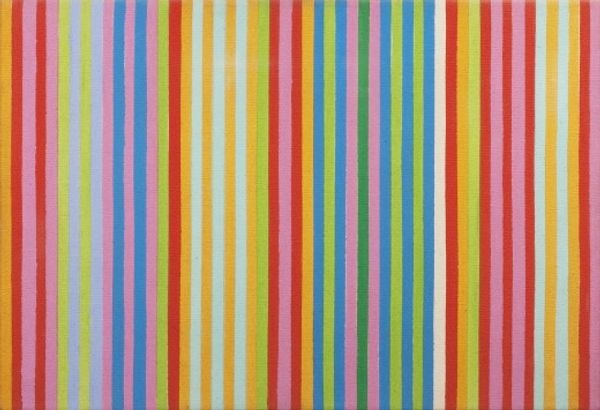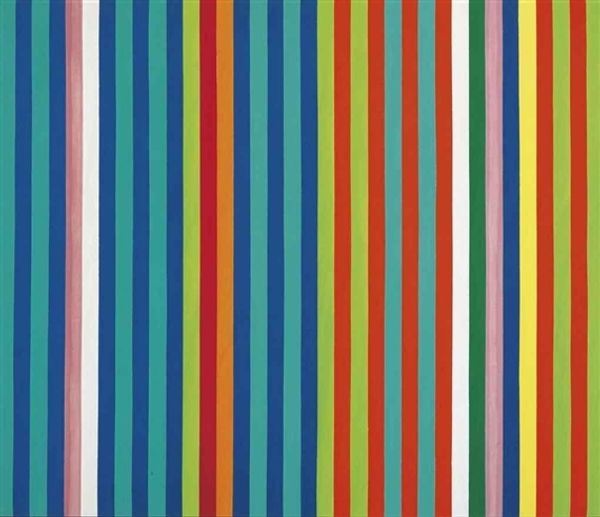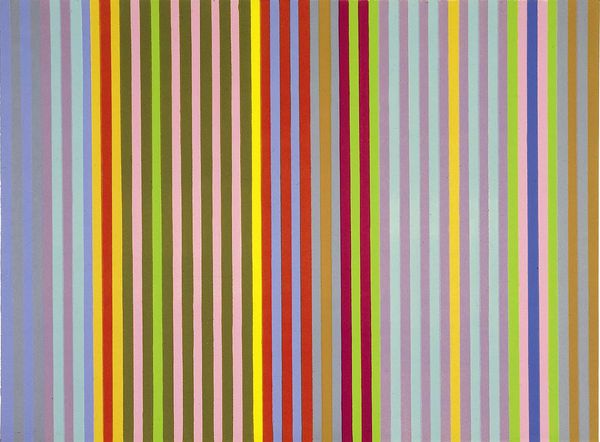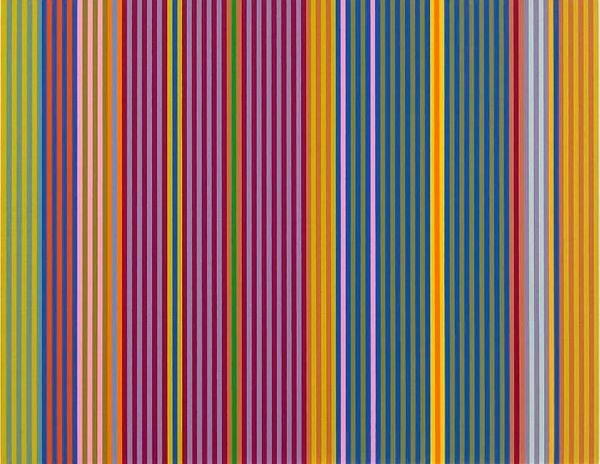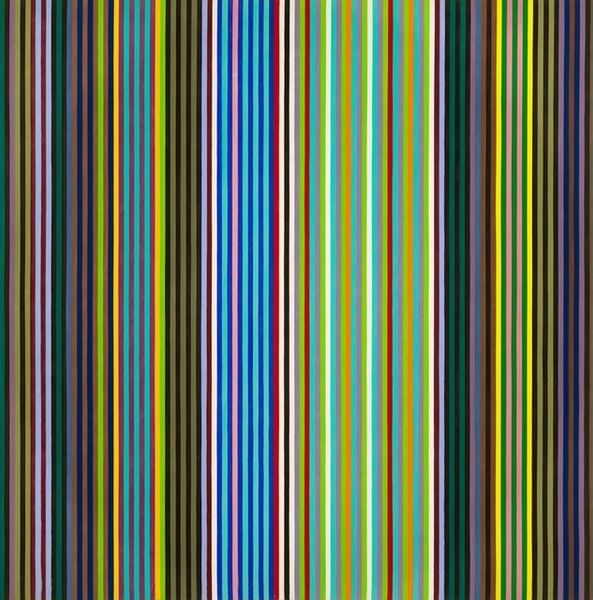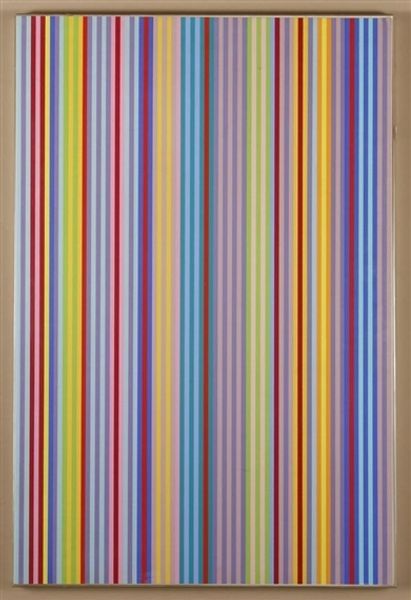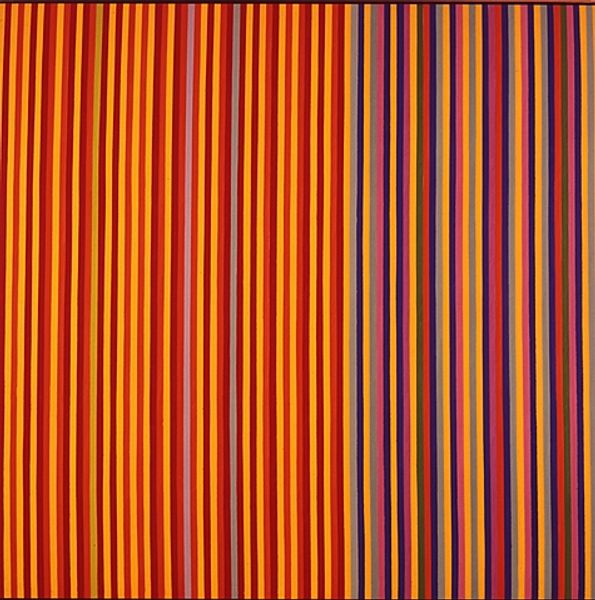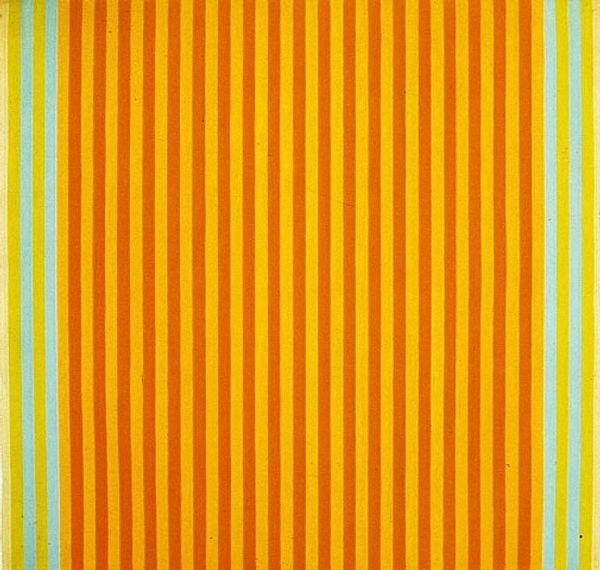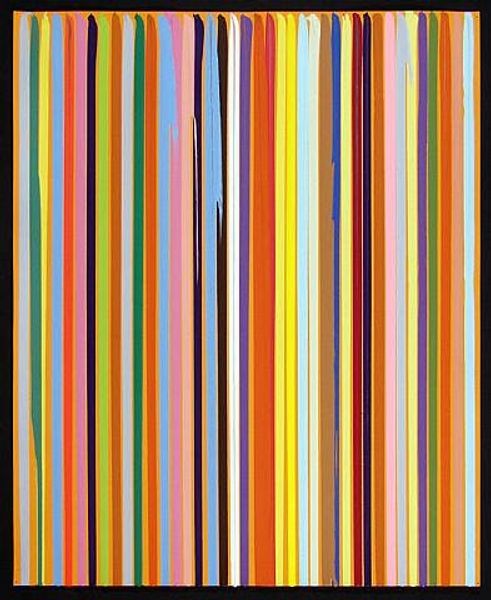
painting, acrylic-paint, ink
#
painting
#
pattern
#
colour-field-painting
#
acrylic-paint
#
geometric pattern
#
ink
#
pink
#
geometric
#
geometric-abstraction
#
abstraction
#
pop-art
#
line
#
modernism
#
hard-edge-painting
#
orange
Copyright: Gene Davis,Fair Use
Editor: This is Gene Davis's "Passion Flower," from 1968. It’s an acrylic on canvas painting with stripes of vibrant colors – pinks, oranges, greens, blues, and reds. I'm really drawn to its playful, almost hypnotic effect, the way the colours vibrate against each other. How does its historical context inform your view of it? Curator: Seeing this painting through a historical lens, particularly in the context of the late 1960s, reveals a lot about its significance. Think about what else was happening in '68: the Vietnam War protests, the Civil Rights movement… This artwork presents pure, unadulterated visual joy, a striking contrast to the turbulent political and social landscape. It rejects traditional representation and engages in abstraction that some might argue is disconnected from social realities. How might we interpret this “disconnectedness?" Editor: So, is Davis intentionally offering an escape? Or maybe a different form of engagement, shifting away from narrative? Curator: Exactly. Artists like Davis were consciously turning away from narrative, representational art to explore the pure aesthetics of color and form. Some might interpret this as escapism, as you suggested. Others, though, might see it as a powerful statement in its own right, a kind of utopian vision amidst chaos. This relates to Clement Greenberg’s promotion of flatness and formalism; can you relate "Passion Flower" to those concepts? Editor: That makes sense. Greenberg believed art should focus on its inherent properties, pushing away literary or social narratives. "Passion Flower," with its hard-edged stripes, certainly fits that idea. Its strength *is* its purely visual, non-referential quality. Curator: And the scale, the serial repetition…all of these things contribute to a public experience meant to elicit bodily sensations over contemplative thought. Given this discussion, what have you learned about the intersection between "high art" and public perception? Editor: That even abstract, seemingly apolitical art like this can spark a complex dialogue about its place in society and its potential social impact. It makes you wonder, what IS the social responsibility of art? Curator: Indeed. Perhaps the "Passion Flower" wasn't just blooming in a vacuum, but within the hothouse of late 60s sociopolitical discourse!
Comments
No comments
Be the first to comment and join the conversation on the ultimate creative platform.

